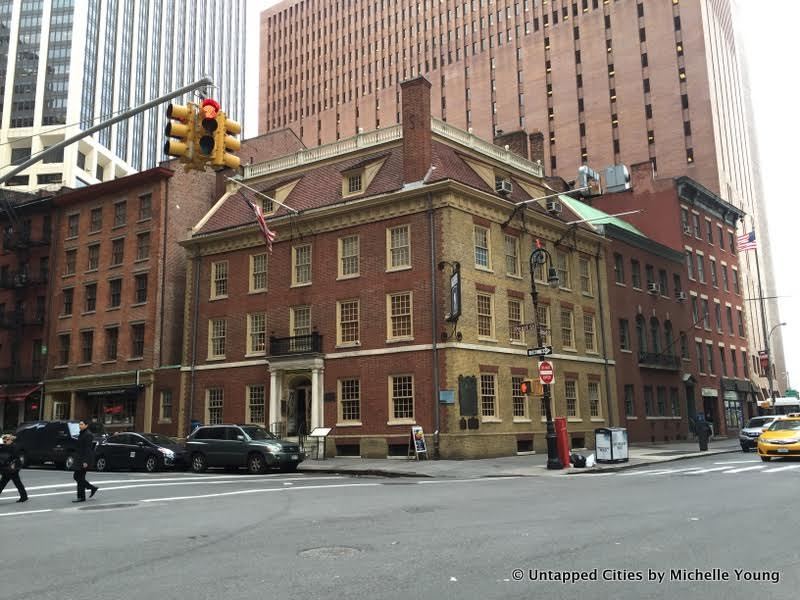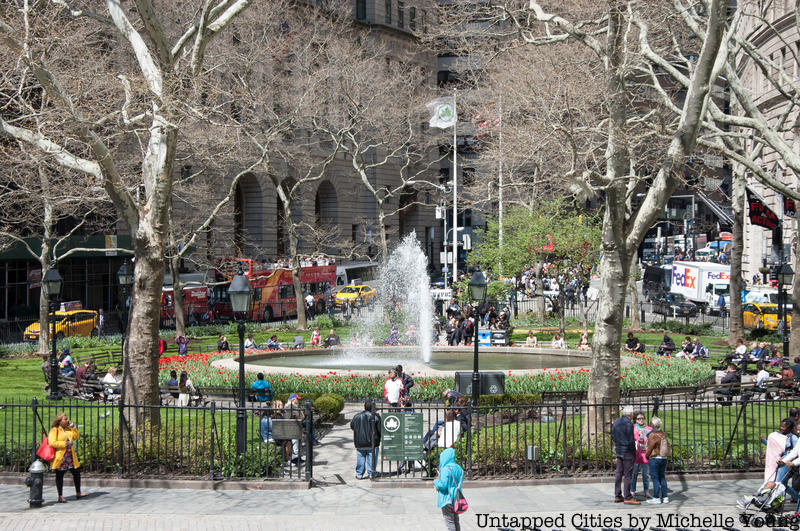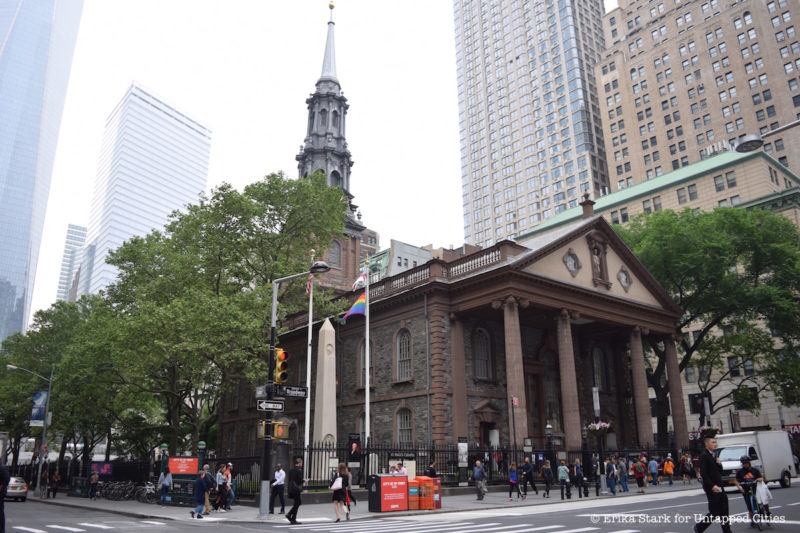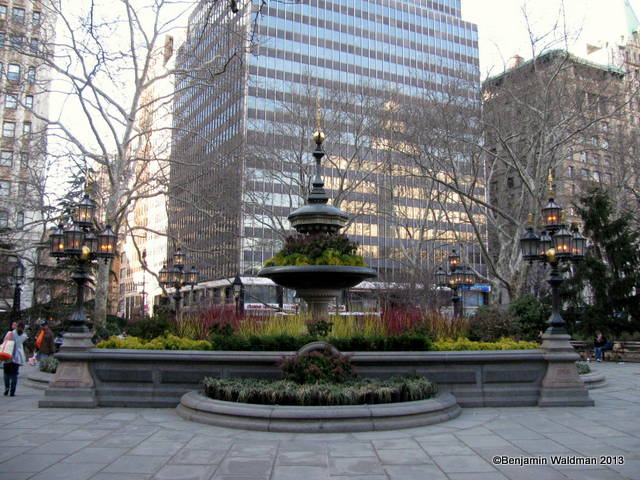
Walking around New York City by day, it’s easy to pass by the many historic parks and buildings without a second glance. Nighttime is a little scarier in lower Manhattan, however, with so much eventful–and often grisly–history in the area. We took a little tour of the city’s haunted haunts with Boroughs of the Dead and came away thoroughly spooked. Check out the city’s haunted past in this week’s featured Foursquare list.
1. BOWLING GREEN

Bowling Green: This area used to be home to the Lenape Indians, who were often at the mercy of Dutch settlers encroaching on their land. The Dutch massacred hundreds of native women and children in Kieft’s War (1643-45). These triggered a wave of Indian retaliations that ultimately resulted in the death of a hundred Dutchmen in the Peach Tree War. After a Dutch settler shot a young Indian girl who picked a peach from his orchard, five hundred Lenapes attacked Manhattan in response.
Life in 19th Century New York was filled with murder, corruption, crime, and vice of all flavors. This just under 2-hour historical walking tour examines some of old Gotham’s most brutal and infamous crimes, some still unsolved, all set against the backdrop of a bustling city that seethed with scandal. From the gangsters of the Five Points to the tragic women of McGurk’s Suicide Hall, we’ll explore the shadiest, tawdriest, and most notorious stories of old New York.
2. FRANCES TAVERN
 Fraunces Tavern
Fraunces Tavern
Fraunces Tavern: This Revolutionary-era tavern, still in service today, was the site of George Washington’s farewell address to his army officers at the end of the war. Other people have bid farewell there as well–though not voluntarily. The tavern was the site of a murder/suicide in the 1790’s, when a man stabbed his cheating wife and then himself. In 1975, Puerto Rican nationalists bombed the building, killing four. Workers and patrons have reported hearing footsteps and unexplained noises. Today, the first floor of Fraunces Tavern remains a tavern and restaurant, and the second floor is a museum full of Revolutionary War relics including George Washington’s tooth!
3. Wall Street
 Photo by New York World-Telegram and the Sun Newspaper Photograph Collection via Library of Congress
Photo by New York World-Telegram and the Sun Newspaper Photograph Collection via Library of Congress
Wall Street: The site of the JP Morgan building bombing in 1920, this famous street was the site of the first Chase Manhattan (founded by Aaron Burr). Burr and Alexander Hamilton were victorious in defending the fiancé/alleged murderer of Elma Sands, a young woman whose body was found in a well on Spring Street after she eloped.
4. St. Paul’s Chapel

St. Paul’s Chapel: The cemetery is the resting place of actor George Frederick Cook’s headless body. Cook donated his head to science upon his death in 1811, and visitors report seeing a headless man walking around at night. His skull was reportedly used as a prop in productions of Hamlet in the theater across the street. Nearby was PT Barnum’s American Museum, which burned down in 1865 with dozens of exotic animals inside.
5. City Hall Park

City Hall Park: Bridewell Prison used to occupy the north end of the park, and was one of the deadliest British prisons in Revolutionary-era New York. The windowless jail was home to thousands of starving patriot prisoners of war. Bones were found here during the 1990’s renovation of City Hall. In the Doctor’s Riot of 1788, the grave-robbing activities of medical students triggered a citizen mob.
6. Tweed Courthouse
 The Tweed Courthouse
The Tweed Courthouse
Tweed Courthouse: Corrupt politician “Boss” Tweed financed construction of the courthouse, which cost twice the price of Alaska in 1867 and took 20 years to build. When the public caught wind of Tweed’s bribes and kickbacks, many Tweed and his associates were slapped with criminal charges. It’s said that his ghost still haunts the courthouse.
7. 1 Police Plaza

1 Police Plaza: A former sugar refinery was located here during the Revolution and it is commonly said to have housed a British prison, although one historian believes it to be an urban myth. It’s rumored to be haunted by the prisoners who starved here during the war. Nonetheless, other notorious sugar house prisons were located nearby housing prisoners in terrible conditions. The refinery here was demolished in 1892, and today is the NYPD headquarters. One window of the original refinery remains, and is integrated in the current building.
Want more ghost stories? See what NYC’s former graveyards are now–you’d be surprised!





